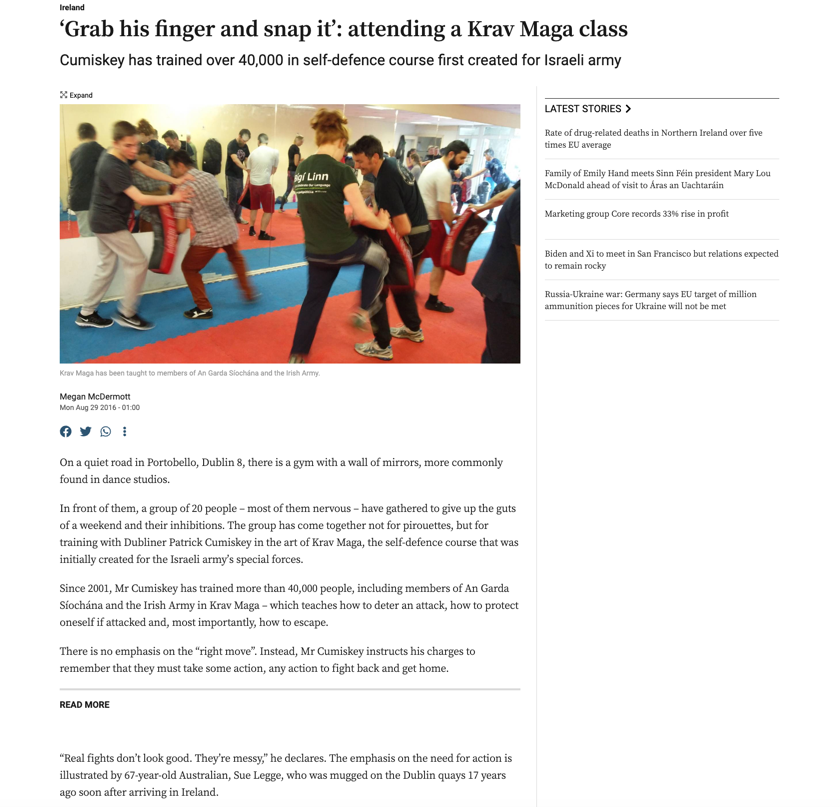
On a quiet road in Portobello, Dublin 8, there is a gym with a wall of mirrors, more commonly found in dance studios.
In front of them, a group of 20 people – most of them nervous – have gathered to give up the guts of a weekend and their inhibitions. The group has come together not for pirouettes, but for training with Dubliner Patrick Cumiskey in the art of Krav Maga, the self-defence course that was initially created for the Israeli army’s special forces.
Since 2001, Mr Cumiskey has trained more than 40,000 people, including members of An Garda Síochána and the Irish Army in Krav Maga – which teaches how to deter an attack, how to protect oneself if attacked and, most importantly, how to escape.
There is no emphasis on the “right move”. Instead, Mr Cumiskey instructs his charges to remember that they must take some action, any action to fight back and get home.
READ MORE
“Real fights don’t look good. They’re messy,” he declares. The emphasis on the need for action is illustrated by 67-year-old Australian, Sue Legge, who was mugged on the Dublin quays 17 years ago soon after arriving in Ireland.
“I was so angry that I did nothing. I just froze,” she says. She has wanted to learn to protect herself ever since.
Initial awkwardness takes the class time to overcome, particularly since many moves include a palm to the groin. “Don’t overthink; just act” becomes the weekend’s mantra.
In a relatively short time, the shy slapping of palms on pads and timid twisting of arms gives way to unreserved snarls and the occasional smack from an elbow. Overseeing the drills, Mr Cumiskey shouts at one pupil: “Grab his finger with all of yours and just snap it.”
Tony Cohen, who has training in other forms of martial arts, brought his teenage son along for the two days. Such pairings are increasingly common at Mr Cumiskey’s classes.
“There’s just more menace around. People are definitely more concerned,” he says.
“You can be a nice person and still know how to look after yourself.”